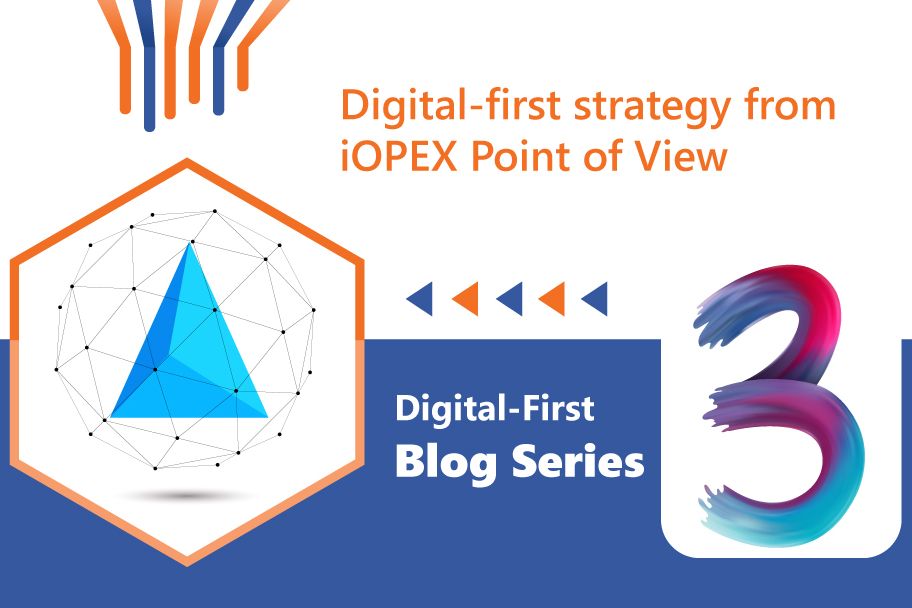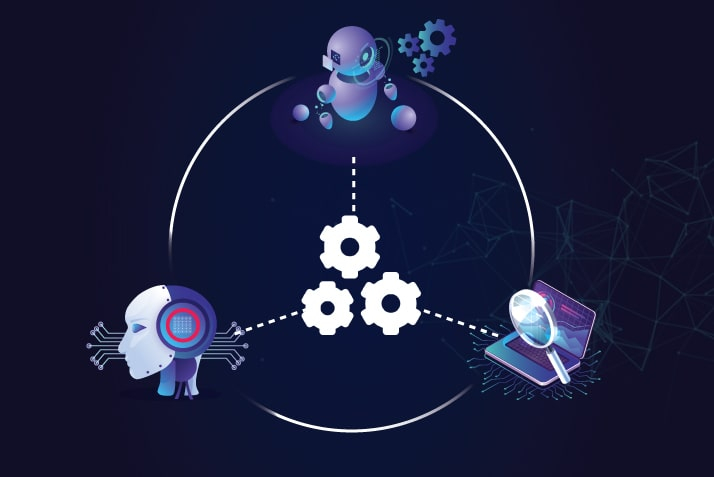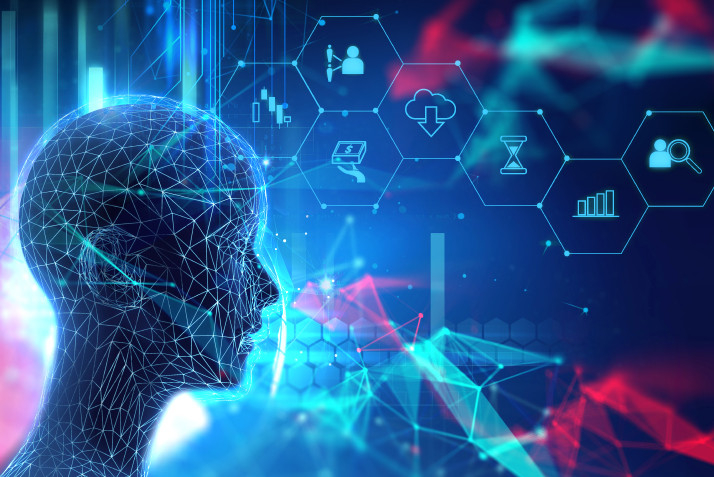Planning, execution, and choosing the right partnership for Digital first success
In the previous blog, we outlined the critical barriers faced by leaders and probable success factors in Digital first implementation, and how an experienced technology partner & fusion team can enhance the success further. In this blog, we will provide the perspectives of having the right strategy & framework in place across people, process, product, and data for an end-to-end transformation.
iOPEX point of view - Digital first
Digital first is the initiative taken by organizations to build a comprehensive digital experience for all its users (customers, employees, vendors/partners) that is strategically incorporated with their present delivery model, be it product delivery or service delivery. And this delivery model should be continuously observed using technologies like ML/AI and learn from the data gathered to further enhance digital experiences. It is not the one that focuses on providing band-aids to traditional processes through partial adoption, integration, and automation
Enable a Digital Fabric that suits your roadmap
Every business transformation approach needs a complete roadmap or project plan to find out the scope, challenges, and risks involved for better decision-making based on the current business process and technology sunk cost. The digital fabric you pick should be a combination of the right set of tools and technologies for the near term and durable for the long-term considering the sunk cost of its existing technology and new-age solutions.
Every type of data and process should be analyzed before opting in for new technology and the analysis should be backed up by a strong business objective which could be to improve customer retention rate, increase product adoption rate, improve employee performance, and so on. Leading any large business transformation initiative could be stressful for the business leaders, and the digital-fabric strategy enables organizations to prioritize goals and pick the right tools & technologies to achieve those goals.
DELTA model for an end-to-end transformation
- The delta model is a continuous improvement product/service delivery model for organizations involved in business transformation of any stature. The model evaluates the
- Readiness of the organizations with their existing data and process quality, through Discovery,
- Formulates goals for different business units with a shared vision and an Evolving Digital first mindset
- Leverages the existing information available across systems and business functions
- Core-business functions are Transformed based on the business objectives and priorities
- Accelerate digital adoption through continuous culture, data, and process changes

Thoughts on choosing the right technology partner
The right technology partner should develop the right business use cases and focus on deploying and orchestrating the right tools, technologies, and methodologies with a clear transformation roadmap. Some of which are,
- Building a Digital first organization: Apart from being a transformation enabler through technology adoption and integration, the partner should help in building a truly digital-native enterprise that embraces agile methodologies and a digital way of doing business that strives toward meeting customers’ needs.
- Change Management: Change efforts have an impact on procedures, systems, and culture within a company. To adequately examine all of this, senior leaders require a strategy, and the partner should be involved in understanding the smaller details to set better scope & timeline and analyze and mitigate risks for a seamless transformation.
- Talented team with technology expertise: Once we carefully mitigate risks and set the business objectives against the use cases, the key is to take ownership and execute it. It needs an experienced team with technical expertise that always asks “How?”
Engineering the Digital first experience can be with the use of one or more of the below technologies,
o Robotic process automation (RPA)
o Business process management (BPM) and Smart Workflow platforms
o Integration platform as a service (iPaaS)
o Low-code/no-code app / workflow development
o Event-driven software architecture
o Machine learning (ML) / Artificial Intelligence (AI)
o Other types of analytics, processes, and task automation tools
Live Digital first execution for a UK-based large Telecom giant:
This transformational story that was acknowledged by HFS recently where iOPEX provided an hyperautomation or intelligent automation for the UK-based telecommunication giant stood out amongst others and how our approach scaled and saved up to $15 million, where so many got stuck at the pilot stage! The below framework developed by iOPEX involves picking the right set of technologies using the digital fabric strategy. The objective was to improve the customer experience with less human intervention which was executed by our DELTA model. Read here for the full story

Conclusion:
It starts with the customers and ends with the customers and the goal for businesses is to build a customer experience journey that is digital and seamless with the least friction possible. Digital first approach can provide that opportunity to build digital experiences that are in line with the business goals. A clear strategy, change management, technology expertise, and execution capabilities are key for any business transformation, hence choosing the right technology partner can make things easier for enterprises planning for large transformations.














